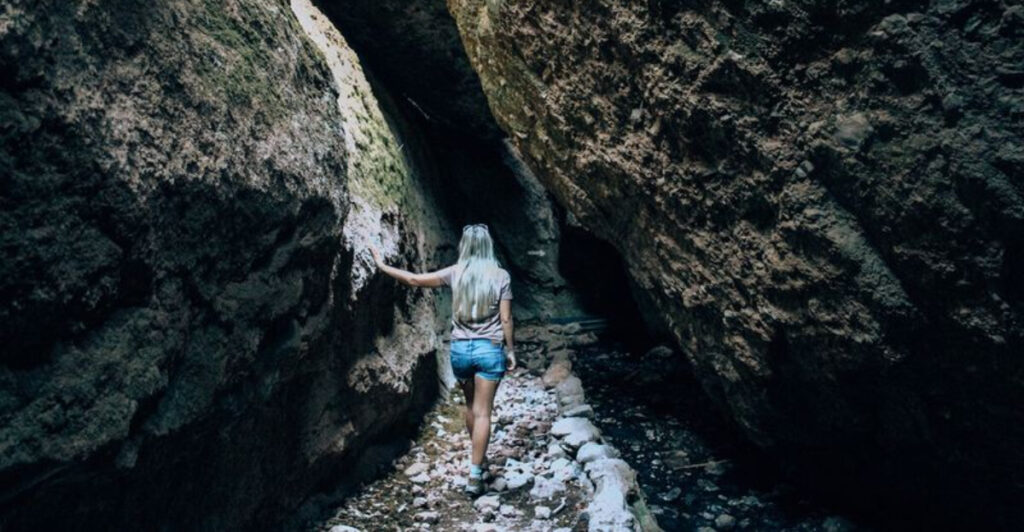Nestled in central California, Pinnacles National Park offers a geological wonderland few visitors expect to find. Towering spires of volcanic rock, mysterious caves, and massive California condors with 9-foot wingspans create an otherworldly landscape. Whether you’re a casual hiker or serious adventurer, this hidden gem delivers unforgettable experiences where ancient history meets wild nature.
1. Trek the High Peaks Trail Loop
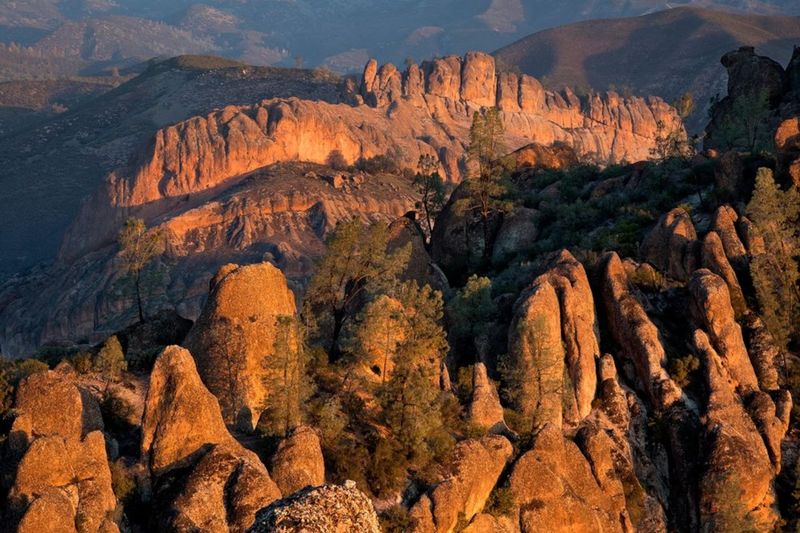
Considered the crown jewel of Pinnacles, this challenging 6.5-mile loop takes you through the heart of the park’s most dramatic formations. Ancient volcanic spires rise dramatically around you as the trail winds through narrow passages and along steep ridgelines.
Sturdy handrails and carved steps help navigate the most exposed sections. Morning hikers often spot condors riding thermal currents just overhead, sometimes close enough to hear their wing feathers cutting through air.
The loop connects with Condor Gulch Trail, offering panoramic vistas of the entire rock formation complex. Bring plenty of water – summer temperatures frequently exceed 100°F!
2. Discover Talus Caves by Flashlight

Unlike traditional caves formed by water erosion, Pinnacles’ unique talus caves were created when massive boulders tumbled into narrow canyons, creating roofed passages beneath them. Bear Gulch Cave and Balconies Cave offer thrilling underground adventures requiring flashlights and sometimes a bit of courage.
Townsend’s big-eared bats call these caves home, so sections may close during breeding season (mid-May through mid-July). The cool darkness provides welcome relief from summer heat.
Water flowing through Bear Gulch Cave creates ethereal echoes as you navigate the twists and turns. Don’t forget to look up – the massive wedged boulders overhead are an awe-inspiring sight!
3. Witness California Condor Recovery Success
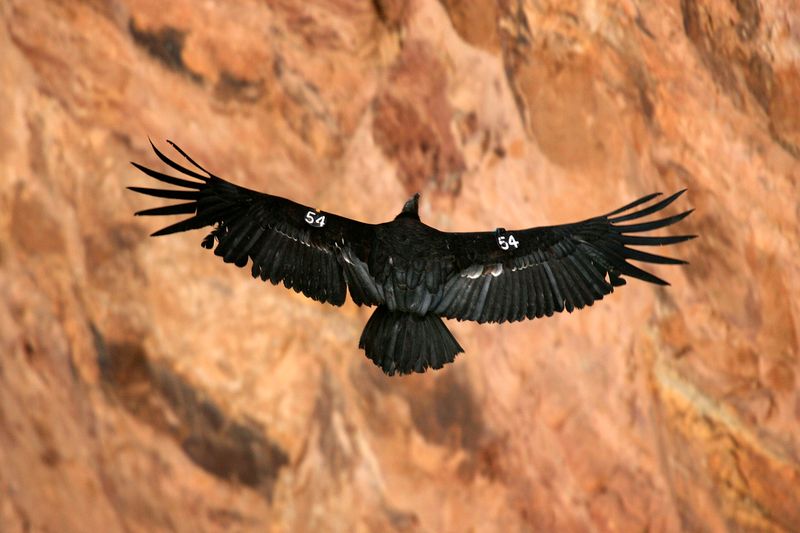
Pinnacles plays a crucial role in one of wildlife conservation’s greatest comeback stories. These magnificent birds, with wingspans reaching 9.5 feet, were down to just 22 individuals in the 1980s before intensive rescue efforts began.
Today, over 80 condors soar through Pinnacles’ skies, many sporting numbered wing tags that help researchers track their movements and health. The High Peaks area offers the best viewing opportunities, especially in morning hours when condors leave overnight roosts.
Bring binoculars to distinguish them from turkey vultures – condors fly with wings held flat like boards, while vultures hold wings in a slight V-shape. Their massive size becomes apparent when they glide directly overhead!
4. Scale World-Class Climbing Routes

Rock climbers flock to Pinnacles for its unique volcanic breccia and rhyolite formations. Over 500 established routes range from beginner-friendly climbs to technical challenges that attract elite climbers from around the world.
The porous, sometimes crumbly nature of the rock creates a climbing experience unlike anywhere else in California. Popular areas include Tourist Trap, Discovery Wall, and the challenging Monolith.
Spring and fall offer ideal climbing conditions with moderate temperatures. Summer climbing is possible but requires early starts to avoid dangerous afternoon heat. Check with rangers about seasonal raptor nesting closures that may affect climbing access to protect breeding birds.
5. Marvel at Spring Wildflower Explosions
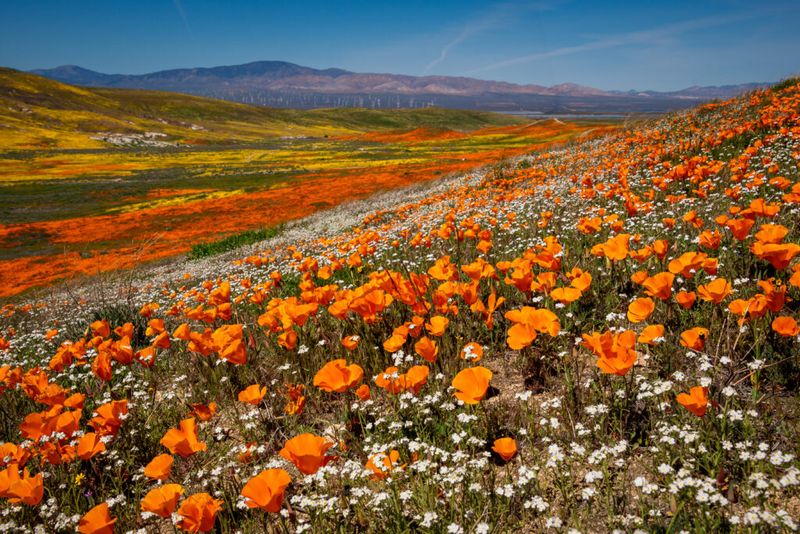
From February through May, Pinnacles transforms into a botanical paradise as wildflowers carpet the normally rugged landscape. California poppies create rivers of orange against the rust-colored rocks, while lupines add splashes of purple and blue.
The rare Pinnacles buckwheat, found nowhere else on Earth, displays delicate pink blooms among the chaparral. Monkey flowers, shooting stars, and mariposa lilies create a photographer’s dream along trails like Balconies and Old Pinnacles.
Mid-March to early April typically offers peak viewing, though timing varies with rainfall patterns. The contrast between vibrant flowers and ancient volcanic rock creates unforgettable scenes that showcase California’s remarkable biodiversity.
6. Gaze at Star-Filled Dark Skies
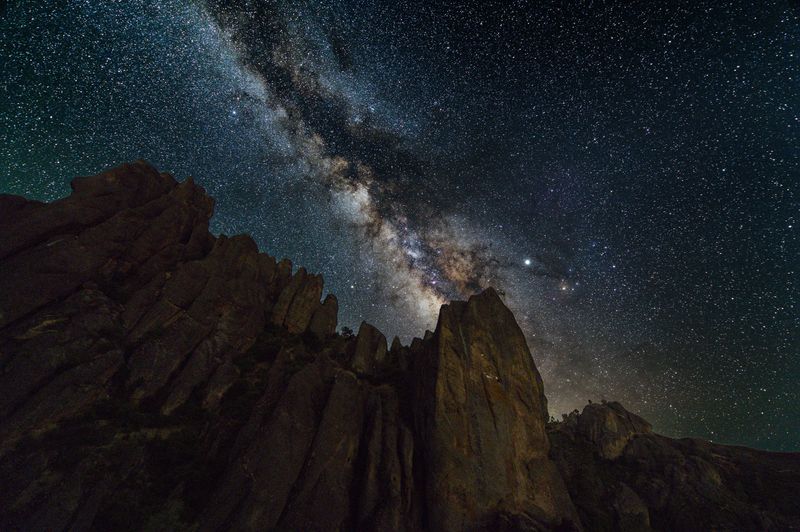
Far from major light pollution sources, Pinnacles offers spectacular night sky viewing opportunities. The Milky Way stretches visibly across the sky on moonless nights, while meteor showers like the Perseids (August) and Geminids (December) provide natural fireworks displays.
The park occasionally hosts astronomy programs where rangers and volunteers set up telescopes for public viewing. Jupiter’s moons, Saturn’s rings, and distant nebulae become visible through these powerful lenses.
For independent stargazers, the East Side campground and parking areas provide excellent viewing spots. Bring red-filtered flashlights to preserve night vision while navigating in darkness – your eyes need about 20 minutes to fully adjust to optimal stargazing conditions!
7. Explore Both East and West Entrances
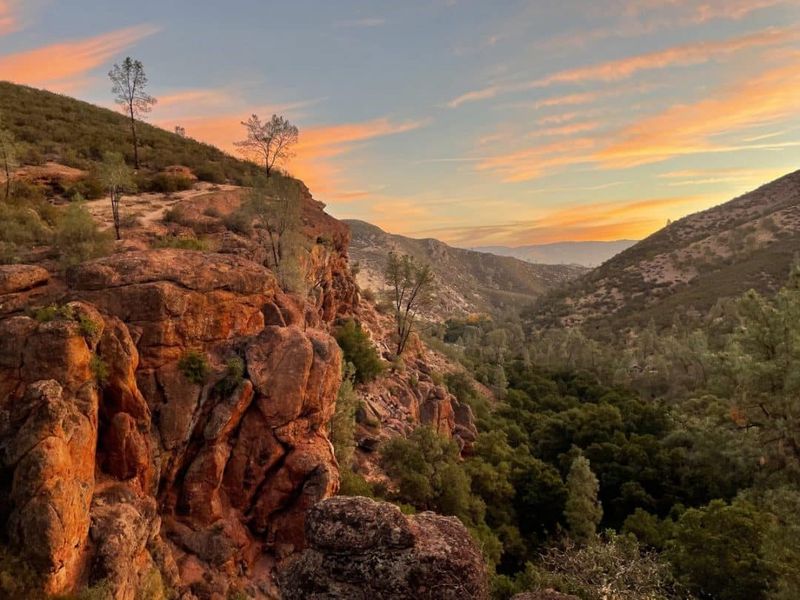
Pinnacles has a secret: its two entrances don’t connect by road! The more developed East Side features the visitor center, campground, and store, making it popular for overnight stays. Its higher elevation provides dramatic overlooks of the entire formation.
The West Side offers a more secluded experience with fewer visitors and direct access to Balconies Cave. Morning fog often clings to this entrance, creating ethereal scenes as sunlight filters through mist around the pinnacles.
True park enthusiasts should experience both sides – they offer completely different perspectives on the same remarkable landscape. The East Side is accessed from Hollister, while the West Side is reached via Soledad, with about a 1.5-hour drive between them.
8. Hike to Bear Gulch Reservoir’s Hidden Oasis
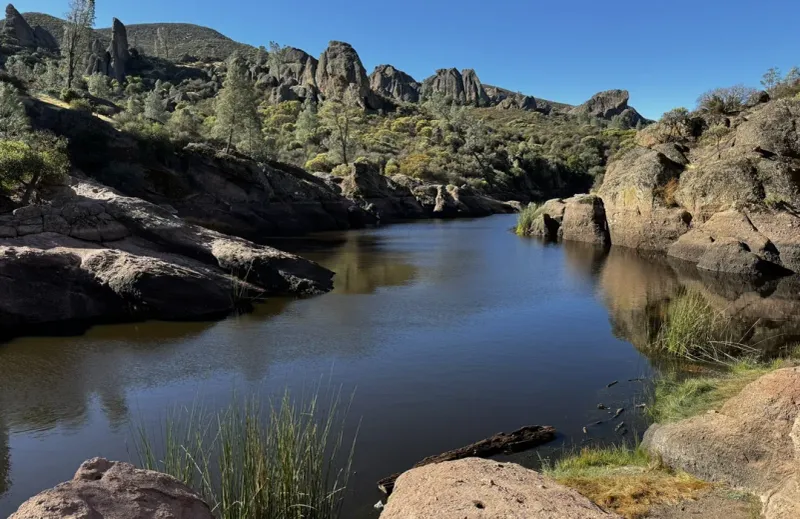
After navigating the mysterious darkness of Bear Gulch Cave, hikers emerge to find a surprising reward: a serene reservoir nestled among towering rock walls. This unexpected oasis was created in the 1930s by the Civilian Conservation Corps as a water source for the park.
Reflections of surrounding pinnacles shimmer on the water’s surface, creating perfect photo opportunities. Lizards sun themselves on shoreline rocks while swallows dart above, hunting insects.
The moderate 2.2-mile round-trip hike from the Bear Gulch trailhead makes this accessible to most visitors. Stone benches along the reservoir provide perfect picnic spots. Visit in spring to see wildflowers blooming along the water’s edge and possibly catch glimpses of newts swimming in the shallows.
9. Experience the Park’s Geological Time Machine
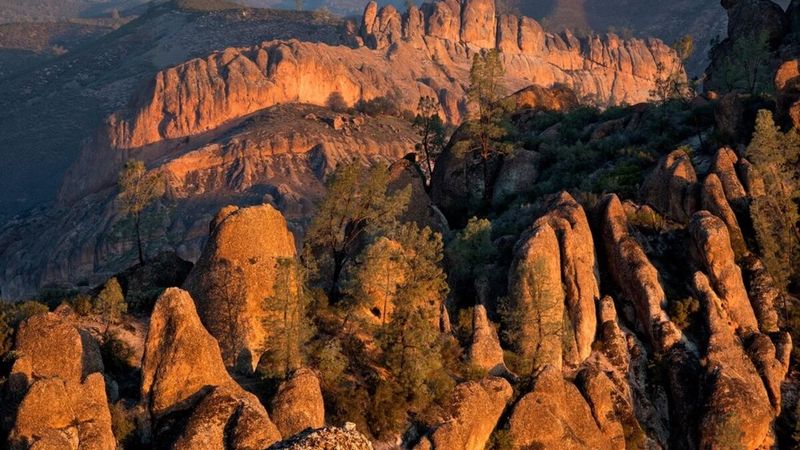
Walking through Pinnacles means traversing ancient volcanic history. These jagged spires began forming 23 million years ago when the Neenach Volcano erupted near present-day Lancaster, California. The San Andreas Fault gradually split and moved this volcanic field 195 miles northwest to its current location!
Erosion has sculpted the remaining volcanic rock into today’s dramatic landscape. Look for distinct layers in the rock walls showing different eruption events. The reddish color comes from iron minerals oxidizing over millennia.
Geologists study Pinnacles to understand fault movement rates and patterns. You’re literally walking through Earth’s dynamic processes in action – the landscape continues shifting imperceptibly beneath your feet as the Pacific and North American plates grind past each other.
10. Spot Diverse Wildlife Beyond Condors
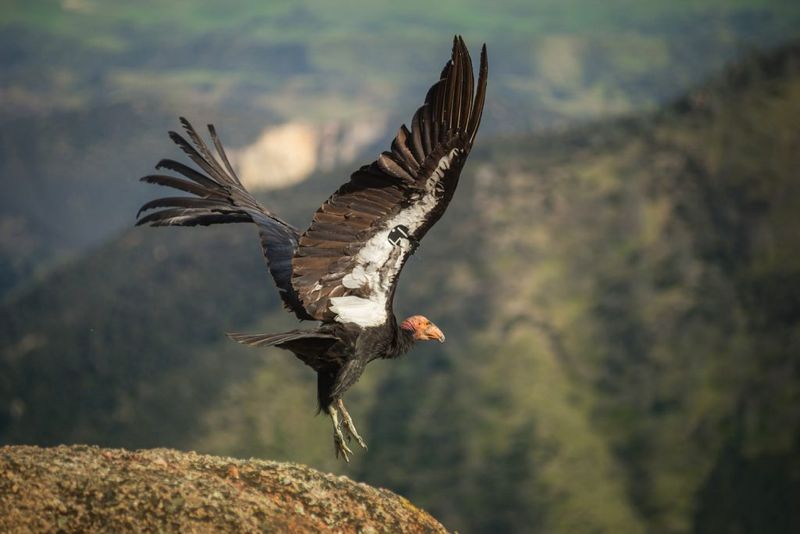
While condors steal the spotlight, Pinnacles hosts an impressive diversity of wildlife adapted to its unique ecosystem. Prairie falcons nest on high cliff faces, performing spectacular aerial hunting displays. Acorn woodpeckers maintain elaborate granaries in oak trees, storing thousands of acorns in precisely drilled holes.
Lucky visitors might glimpse elusive bobcats hunting at dawn or dusk. These spotted felines blend perfectly with the dappled chaparral shadows. During spring, the park’s ponds come alive with chorus frogs, whose calls create a symphony after rainfall.
Bring binoculars and explore the riparian areas along Chalone and Bear creeks for the best wildlife viewing. The park’s biological diversity stems from its location at the intersection of northern and southern California ecosystems, creating a unique biological meeting point.
11. Tackle the Challenging North Wilderness Trail
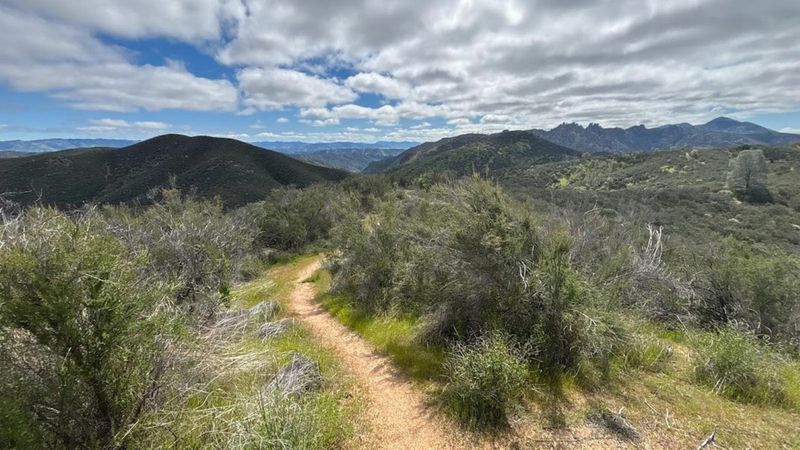
Adventure seekers looking to escape crowds should head to the park’s remote northern section. The North Wilderness Trail offers a rugged 9.4-mile out-and-back journey through virtually untouched chaparral and oak woodland with minimal trail maintenance.
Unlike the park’s popular central areas, you might hike for hours without seeing another person here. The trail follows Chalone Creek before climbing to ridgelines offering sweeping views across the Salinas Valley toward the distant Santa Lucia Mountains.
Carry plenty of water – there are no reliable sources along the route. Spring brings spectacular wildflower displays to this seldom-visited area. The North Wilderness represents true California backcountry, providing the solitude that’s increasingly rare in California’s popular parks.
12. Cool Off in Summer Swimming Holes
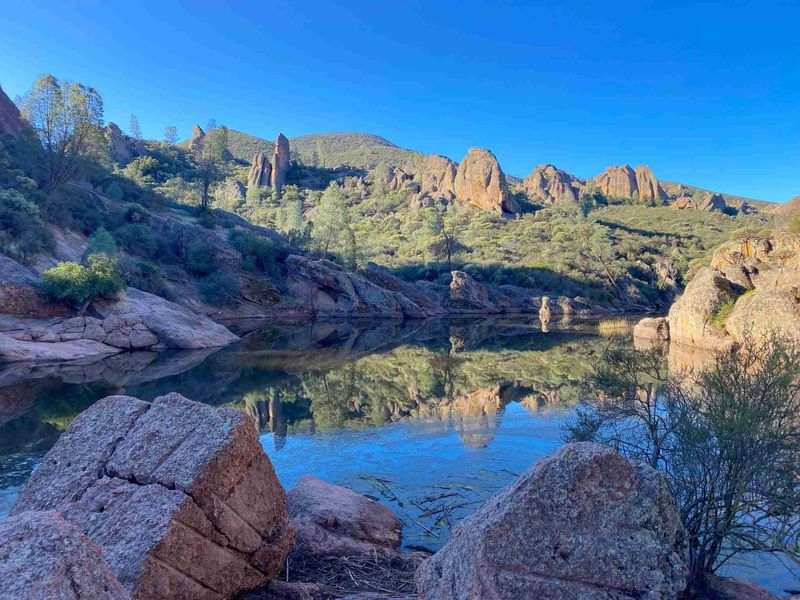
During scorching summer months when temperatures regularly exceed 100°F, knowing where to find water becomes essential. The park’s east entrance campground features a refreshing swimming pool open from April through September – a rare luxury in a national park!
For a more natural experience, seasonal pools form along Chalone Creek after winter rains. These gradually shrink through spring but often persist into early summer. Moses Spring Trail passes several such pools where hikers can dip tired feet.
Rangers can direct visitors to current water conditions, as availability changes seasonally. The contrast between the cool water and hot, dry surroundings makes these swimming opportunities especially memorable. Remember that natural water sources eventually dry up completely by late summer.
13. Find Family-Friendly Adventure Options
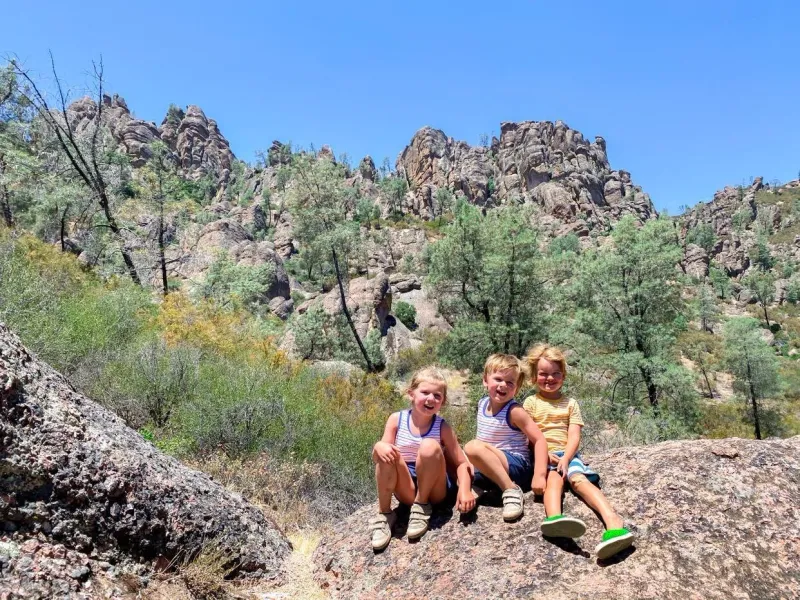
Pinnacles offers plenty for families with young explorers. The Moses Spring Trail provides a perfect introduction to the park’s wonders in just 2.2 miles round-trip. Kids love scrambling through the more accessible portions of Bear Gulch Cave – bring flashlights for extra excitement!
The Junior Ranger program offers age-appropriate activities that teach children about geology, wildlife, and conservation while earning a special badge. The visitor center features interactive exhibits including touchable rock samples and condor feathers.
Families should plan morning adventures before afternoon heat intensifies. The east side picnic area provides shaded tables perfect for lunch breaks. Evening ranger programs at the campground amphitheater often include kid-friendly topics like bat ecology or night sky observation.
14. Camp Under Ancient Volcanic Spires
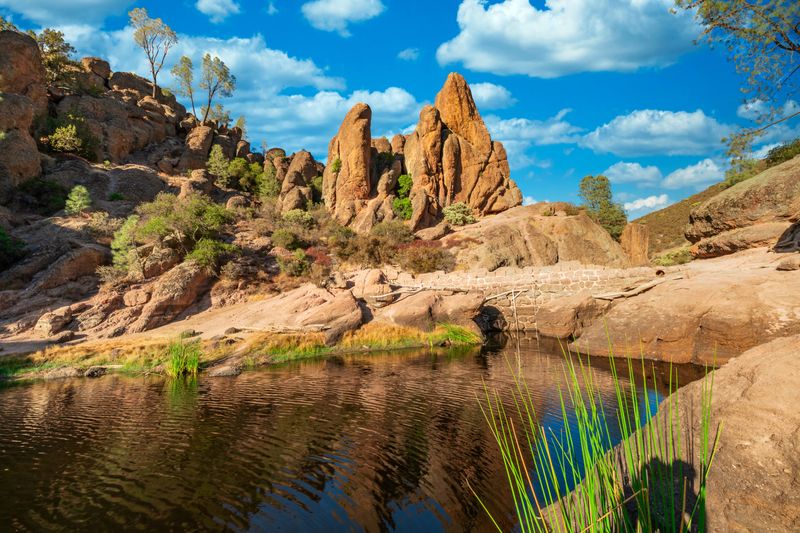
The east side campground offers the unique opportunity to sleep beneath the very formations that give the park its name. 134 sites accommodate both tent and RV campers, with oak trees providing welcome shade during hot months.
Night brings a magical transformation as pinnacle silhouettes stand stark against star-filled skies. Campers often report hearing the distinctive calls of great horned owls echoing off rock walls after sunset.
The campground store stocks essentials and rents equipment like flashlights for cave exploration. Swimming pool access comes included with camping fees – a welcome luxury after dusty hikes! Reservations are essential on weekends and throughout spring, as this is the only camping option within park boundaries.
15. Photograph Dramatic Light and Shadow Play
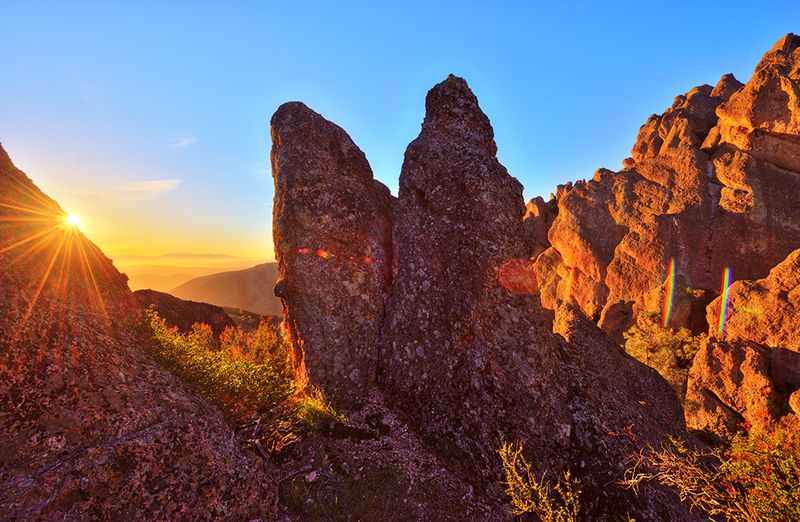
Photographers treasure Pinnacles for its extraordinary interplay of light across textured volcanic surfaces. Golden hour just after sunrise bathes the eastern faces in warm light, while late afternoon illuminates western aspects with rich amber tones.
Winter brings special opportunities when seasonal fog fills valleys below the pinnacles. Patient photographers can capture breathtaking scenes as formations emerge from mist like islands in a white sea.
Spring adds wildflower foregrounds to rocky compositions. The park’s dark night skies allow for stunning astrophotography – try capturing star trails circling above pinnacle silhouettes with long exposures. For dramatic scale, include hikers on trails to demonstrate the imposing size of these ancient volcanic remnants.
16. Escape Crowds with Perfect Timing
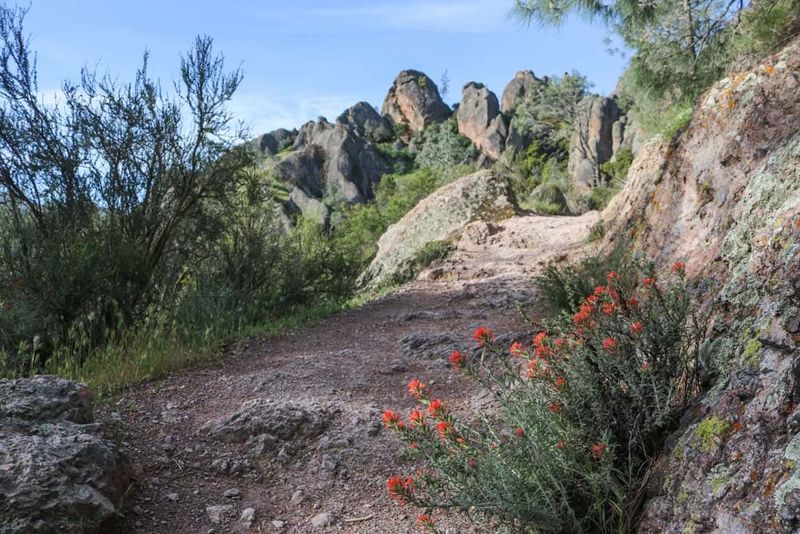
Unlike California’s famous parks that draw millions yearly, Pinnacles remains relatively uncrowded with just 275,000 annual visitors. Strategic timing can further enhance solitude in this geological wonderland.
Weekdays from November through February offer the most peaceful experience. The park’s challenging summer heat (often exceeding 100°F) naturally limits visitors during July and August, especially on weekdays. Early mornings provide tranquility even during busy spring weekends.
For cave explorers, visiting during partial closures when bats are present means fewer people but still accessible sections. The west entrance consistently sees fewer visitors than the east side. True solitude seekers should explore North Wilderness Trail – you might hike all day without seeing another soul!

